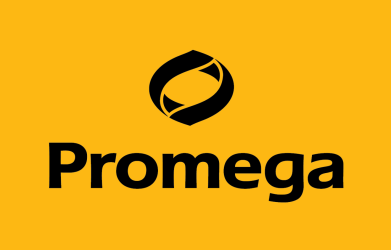Promega is a well-known solution provider serving the needs of industry experts in the biopharmaceutical industry. Although the company has a well-established position in the biologics field, it has moved towards viral vector-based gene therapy. Leanne Wickens, Senior Product Manager at Promega discussed the various technological solutions for AAV and lentiviral vector-based gene therapy.
Promega’s Lumit technology, an immunoassay for AAV capsid titre offers an alternative to ELISA. Wickens explained how the NanoLuc Luciferase functions: “If you split your antibody sample in half and labelled half of your antibodies with large bit, half with small bit and add your AAV, the antibodies with the small bit and large bit tags come together and bind to the AAV and that draws large bit and small bit together.”
Wickens added: “The total assay time is 60 minutes, so you can appreciate that this is a lot faster than doing a standard ELISA and a lot simpler as well. There are no washing steps for example.”
The TruTiter Reagent is used for consistent quantification of AAV genomes without needing to carry out DNAse treatment. Wickens mentioned that: “Traditional methods involve mammalian infectivity assays and digital PCR with that DNAse pre-treatment. But the methods are quite cumbersome and it can be inconsistent using DNAase treatment and generally lack precision.” Meanwhile, the TruTiter bucks this trend.
The TruTiter will bind to any exposed nucleic acid, therefore if a virus has a ruptured capsid, the TruTiter will bind to it thus preventing its amplification. The TruTiter only amplifies DNA inside intact capsids to get a more accurate genome titre.
Wickens conducted a comparative analysis between DNAse treatment and TruTiter to quantify viral DNA copies. The results showed that TruTiter improves the accuracy of AAV quantification by excluding intact capsids without the need for DNAse treatment.
The third technology system Wickens introduced was the NanoLuc-HaloTag Dual Reporter system. This integrates luminescent and fluorescent reporters under one platform. She emphasised the flexibility of this system: researchers can conduct infectivity assays, determine tissue tropism and neutralise antibody detection.
A study published in Nature showed the NanoLuc-HaloTag Dual Reporter in action. The research involved in vivo whole-body imaging of mice injected with AAV9 and the NanoLuc HaloTag reporter. Wickens said: “At day 7 and day 13, the mice were also injected with the Nano-Glo fluorofurimazine substrate to produce luminescence and you can see when you compare the two, you can see the tissue tropism starting to appear at 7 days, but the signal gets stronger and more extensive tropism appears after 13 days.”
Regarding lentiviral vector solutions, the Lumit immunoassay for p24 protein offers rapid and reliable quantification of the capsid protein, providing a wider detection range and greater simplicity than ELISA methods. The Maxwell RSC system further enhances lentiviral workflows by automating RNA and DNA extraction processes, ensuring consistent results across operators and experiments.
In a short time, Promega has made some important strides in the gene therapy space. The focus on bioluminescence techniques and genomics tools can help accelerate gene therapy development.



